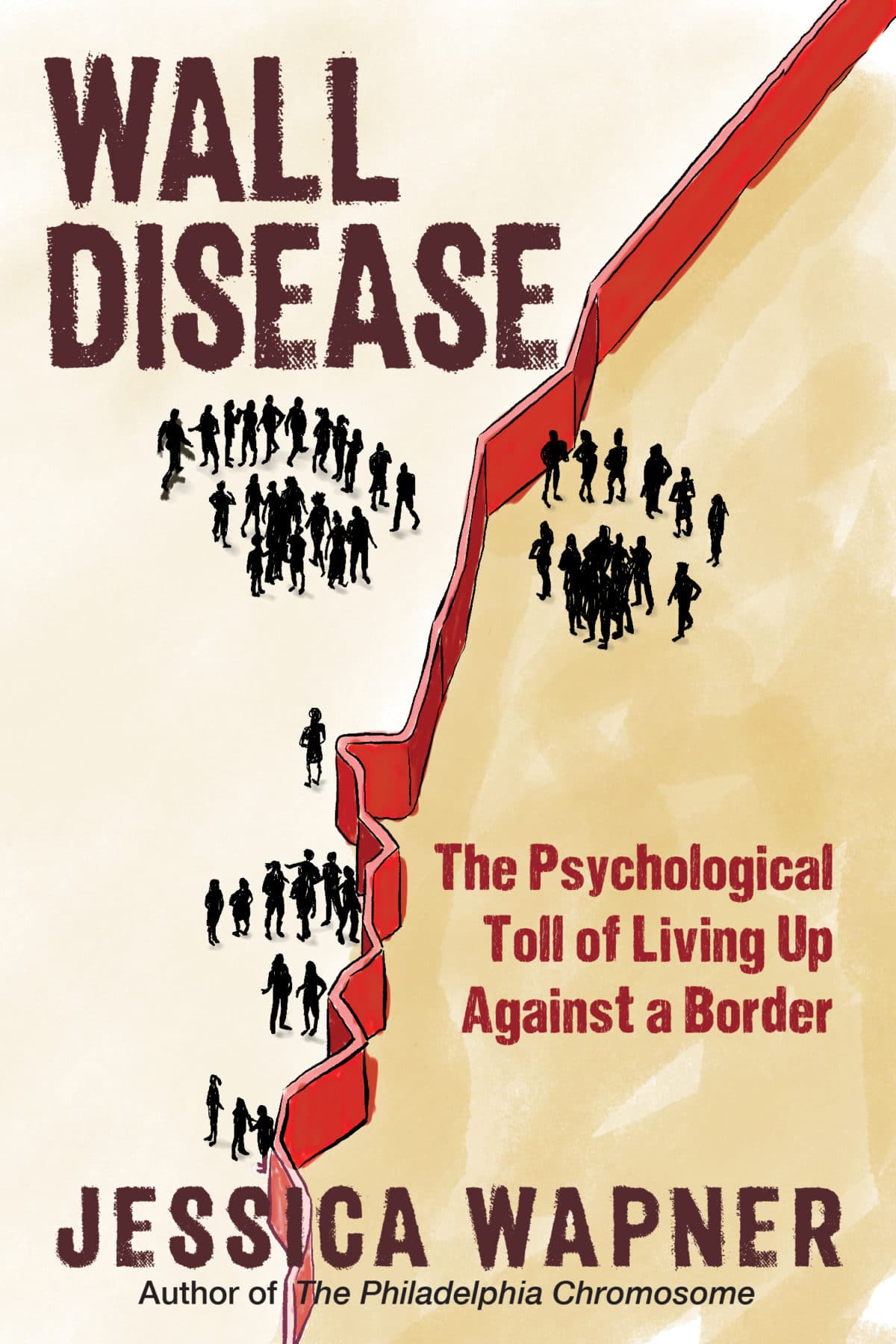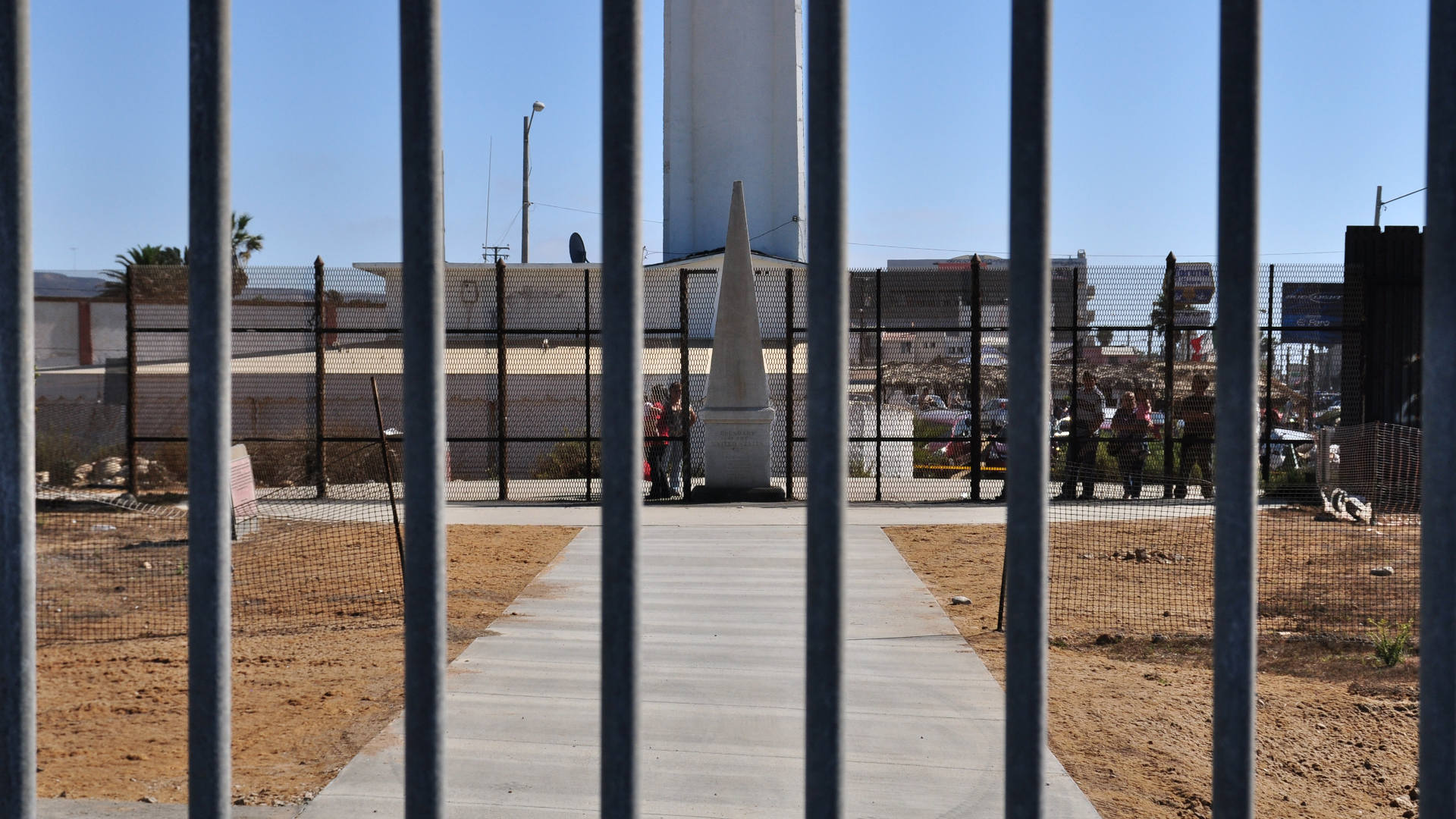Border walls are sad places. On the Mexican side of Friendship Park, paintings hung above the fence bring some color to the otherwise depressing architecture. La poesía es gente con sueños, reads one of them. “Poetry is people with dreams.” Street musicians liven up the scene, too. But the ocean is just yards away and the sound of its waves is a constant reminder of a freedom unavailable to its human witnesses.

The accompanying article is excerpted from “Wall Disease: The Psychological Toll of Living Up Against a Border,” by Jessica Wapner (The Experiment, 128 pages).
An estimated 7.5 million people live in the 24 U.S. counties bordering Mexico. High rates of poverty and unemployment pervade these regions. People tend to be less educated and medical care is sparser. One reassuring 2016 study in the Journal of Immigrant and Minority Health found that people living in the southern U.S. borderlands were not more likely to report depression compared with people living elsewhere. But another study from the following year found that almost a quarter of the 248 adult undocumented immigrants interviewed by psychologists at Rice University met the criteria for a mental disorder, a much higher rate than the general U.S. population. Major depressive disorder was the most common diagnosis, but rates of panic and anxiety were also high. And a report from Imperial County, California, 120 miles east of San Diego, noted that the area was rife with severe risk factors for poor mental health among youth: separation from parents, gang and other violence, fear that they or their parents will be deported, no medical insurance. Children who are recent immigrants face the additional obstacles of learning a new language, adjusting to a new school and new friends, and being teased.
A close look at the borderland counties of Texas reveals a disturbing pattern. About 18 percent of children throughout the state live in high-poverty neighborhoods. According to a 2017 report by the Center for Public Policy Priorities, now known as Every Texan, an independent public policy organization in Texas, that rate climbs to 68 percent in the Rio Grande Valley. Colonias, rural settlements along the border, home to an estimated 340,000 people, often lack potable water, sewer systems, electricity, and paved roads. The median household income for Cameron and Hidalgo Counties, both along the border, is just over half of that for other counties in the state. An estimated 30 percent of children are undernourished. Adults in these counties, whether U.S.-born or not, are less likely to hold high school diplomas than the adult population across the rest of the state.
All of these factors contribute to the impact of living in a border region on children. A huge body of work demonstrates that adversity in childhood has long-lasting effects. The Adverse Childhood Experiences (ACE) Study conducted by the Centers for Disease Control and Prevention, linked up to 21 million cases of depression with early-life experiences of violence, abuse, neglect, or family trauma.
Poverty is, as we know, a major risk factor for mental health issues; this connection has been intimated for years. The landmark Whitehall Study, which tracked British civil servants over many years, found an undeniable link between social class and health: People with lower-status jobs had higher rates of heart disease and bronchitis. And … researchers have zeroed in on the particularly damaging effects of poverty on children, whose brains are still forming. “Childhood socioeconomic status is associated with cognitive achievement throughout life,” wrote psychologists Daniel Hackman and Martha Farah, of the Center for Cognitive Neuroscience at the University of Pennsylvania, in 2009. Studies have found that neurological systems governing language and executive function — mental skills that enable self-control, flexible thinking, planning, and focus — perform less adequately among children from poorer families compared with those from wealthier families. Although the research is sparse and scattered, imaging studies have also hinted at a link between socioeconomic status and brain function, and the data show that young children are hit the hardest by this connection. Poverty also has physical consequences. Adult hypertension, arthritis, and activity limitations have all been linked to early-life poverty.
Obviously, neighborhoods near border walls aren’t the only places where these connections are borne out. But such problems are prevalent near border structures around the world. In 2016, researchers at Queen’s University Belfast reported their analysis of health record data on 1.3 million people to see whether living near a peace line in Northern Ireland affected their mental health. They found that people living near segregation barriers were 19 percent more likely to hold a prescription for antidepressant medication compared with those living farther away from these separators. Prescriptions for anti-anxiety medication were 39 percent more common among people living near a barrier compared with those living farther away. Interestingly, the researchers, led by epidemiologist Aideen Maguire, found that when deprivation — in other words, poverty — was taken out of the mix, the difference subsided. Segregation was likely to lead to lower socioeconomic status, which in turn was likely to lead to mental health issues.
Social deprivation — the erosion of a healthy, vibrant relationship between people and society — is especially pronounced in peace wall areas. Signs of social deprivation in a community include higher rates of mental illness, alcohol use, a lack of upward economic mobility, and lower levels of education, among other factors. As one group wrote in 2014, “The most socially deprived areas in Belfast are also areas where ‘peace walls’ or interfaces between communities are prominent, are the areas of lowest educational attainment with the fewest amount of children and young people progressing into third level education, and are places where youth and unemployment run highest.” Fourteen of the 20 most deprived areas of Northern Ireland are near segregation barriers in an urban setting. Young people living near barriers have expressed reluctance to leave their community due to a fear of life “beyond the wall.”
Clearly the situation in Northern Ireland involves more factors than merely whether or not people live near segregation barriers. But these structures connect to a painful history. “It is those individuals living in close proximity to a peace wall who are more likely to have had direct experience of violence than their counterparts living elsewhere in Northern Ireland,” note the authors of a 2017 policy brief on the peace lines. More recent violence has tended to cluster around the barriers: 70 percent of all politically motivated murders in Belfast between 1996 and 2001 were committed within a third of a mile of a peace line. Rates of educational underachievement, unemployment, violence, alcohol abuse, and prescriptions for psychiatric medications — all are higher near the peace lines.
The physical barriers can’t be held responsible as the sole cause of this clustered suffering. Many of the people experiencing these issues were born after the walls were built, so they have never known anything different. “The wall is simply part of the built environment,” says Jonny Byrne, from Ulster University, an author of the previously mentioned and other related policy briefs.
And yet the cloud of problems hovering around the barriers is undeniable. “There’s no doubt that the walls have created concentrated levels of social and economic and political deprivation,” says Byrne. As with so many borders around the world, it’s not just the physical structure that causes problems, but what the structure represents.
One of the strange truths about the peace lines, says Byrne, is that they worked. They accomplished the task they were built for, slowing down, even halting violence between communities. The peace lines even served as a model for concrete walls erected to stop attacks between the Sunnis and Shiites in Baghdad, Iraq, in the mid-2000s. But the problem goes back to the fundamental problem with border walls: They create “the other.” A barrier leads those behind it to adopt a single identity. And that identity is reinforced by stories and attitudes that treat those on the other side as dangerous, different, and inferior. “It becomes folklore,” says Byrne, leading to stereotypes that pass from one generation to the next. By this time, the politicians who benefited from erecting the barriers are long gone; they don’t have to deal with the lasting consequences. “When you build a wall, you have no idea what the environment’s going to be like in 20 years’ time,” says Byrne. “The long-term effects are devastating.”
So even though the barriers may have had some immediate benefit, Byrne sees nothing good about them. “Segregation isn’t positive,” he says. “Segregation is terrible.” In a 2015 survey conducted by Byrne and others, nearly half of the 1,000 respondents said they never interacted with communities on the other side of the nearest peace wall. More than half felt the barriers cast Northern Ireland in a negative light on the world stage. Although half the respondents said they wanted the walls removed, only a third of that half said they’d like them to come down right away. The rest of that half was less committal, wanting their removal “sometime in the future.” And a third of the survey respondents wanted the walls to stay as they were. (The remainder wanted to keep the walls and either make them look nicer or improve access to the other side, or they didn’t know what they thought.) The vast majority acknowledged that keeping the barriers in place would negatively affect jobs, safety, health and well-being, and community relations — all social factors that have been linked to diminished mental health. As Byrne sees it, the proliferation of border walls around the world “tells us more about the absence of ideas to solve these problems.”
Then there are the problems posed by the wall itself. “We are moving organisms,” says trauma psychologist Bessel van der Kolk. Border walls immobilize us. This restriction can be devastating to our mental health. Van der Kolk recalls a disturbing observation he made as a medical student studying the brains of rats. Holding his hands over them to stop their movement proved traumatizing after just a minute or two. “The rats were messed up for the rest of their lives,” he says.
Van der Kolk theorizes that the physical immobility imposed by border walls imparts a sense of being trapped and oppressed. That kind of traumatic feeling often roots itself in brain regions that we can’t always access with language. And so instead of simply expressing how we feel, we become depressed, anxious, or filled with rage. These emotional reactions are reinforced by the presence of danger the wall signals. “How can you not get mental or physical illness from that?” says van der Kolk.
Jessica Wapner, the author of “Wall Disease: The Psychological Toll of Living Up Against a Border,” is a science writer whose work has appeared in The New Yorker, The New York Times, Wired, The Washington Post, Scientific American, The Atlantic and elsewhere. She is the author of “The Philadelphia Chromosome: A Genetic Mystery, a Lethal Cancer, the Improbable Invention of a Lifesaving Treatment,” and is the co-host of the forthcoming podcast One Click, out in early 2021.











Comments are automatically closed one year after article publication. Archived comments are below.
Wonderful article. Thank you. A follow up essay on the contrasting effect of ‘tearing down’ a wall…would be wonderful! Flip side kinda tho g!
Thank you for the work!!
While it is not a border, but a horrific apartheid wall, built by Israel, which snakes through Occupied Palestine, dividing people from family, farms, jobs, schools, homes, gardens, surely some mention should have been made of it?